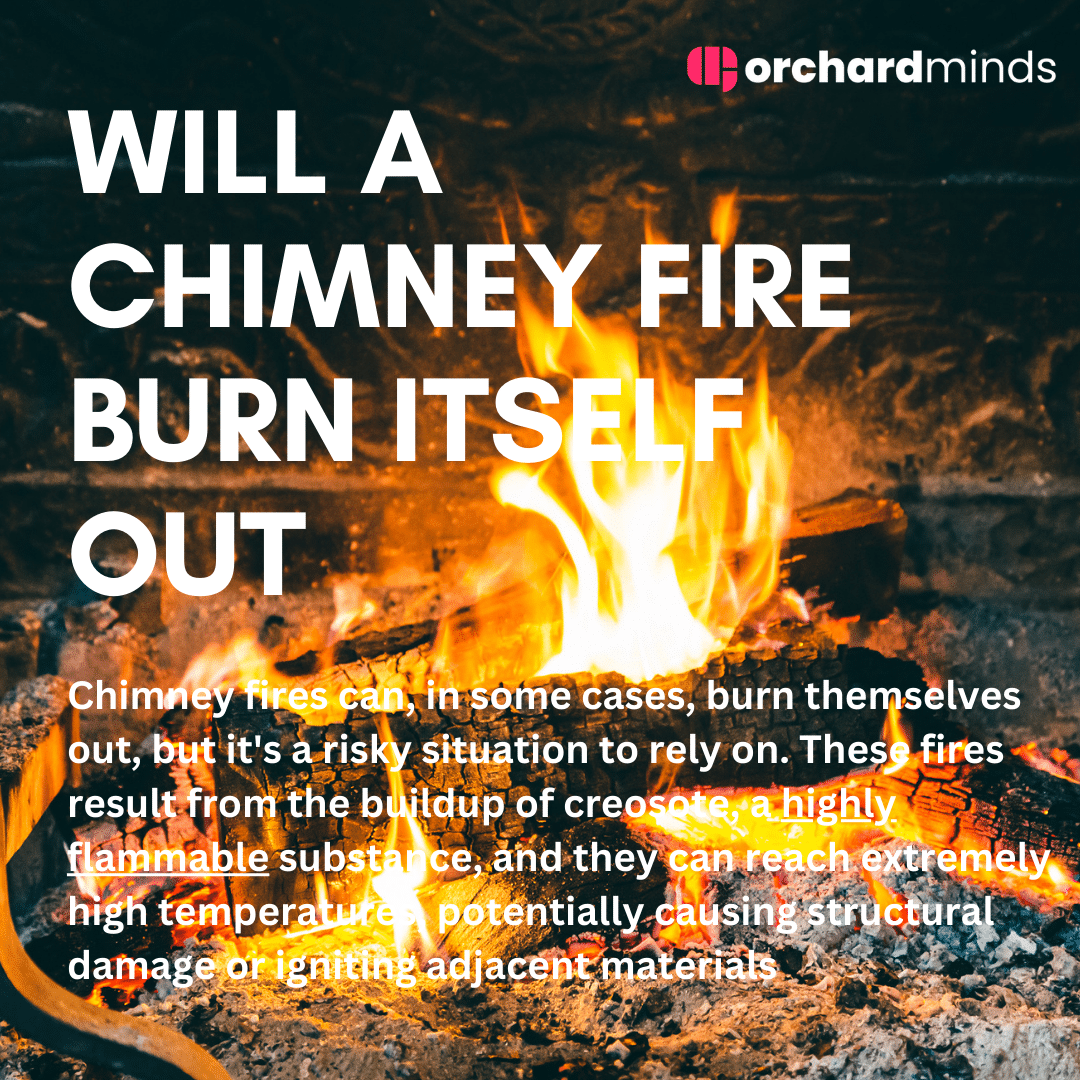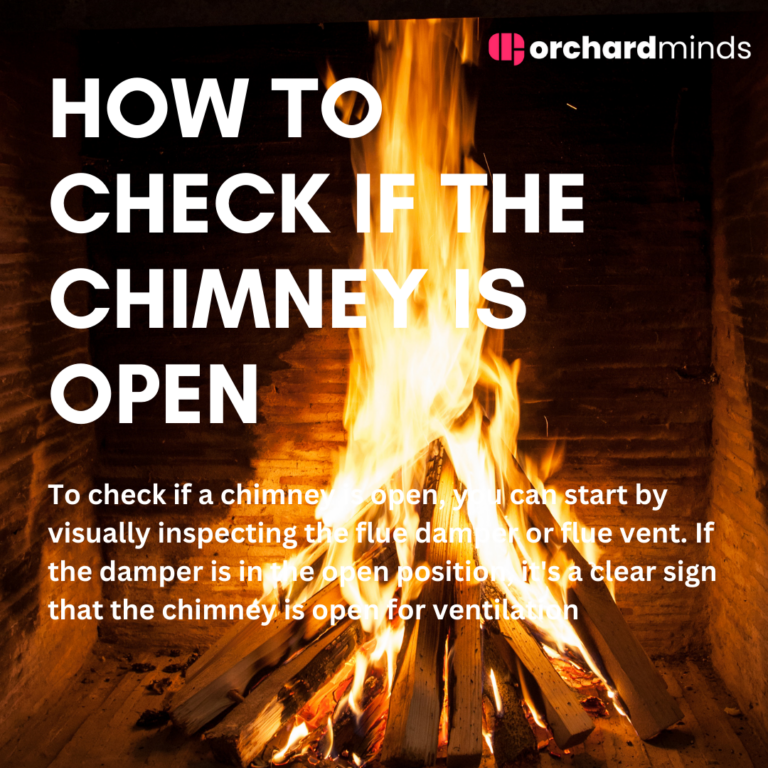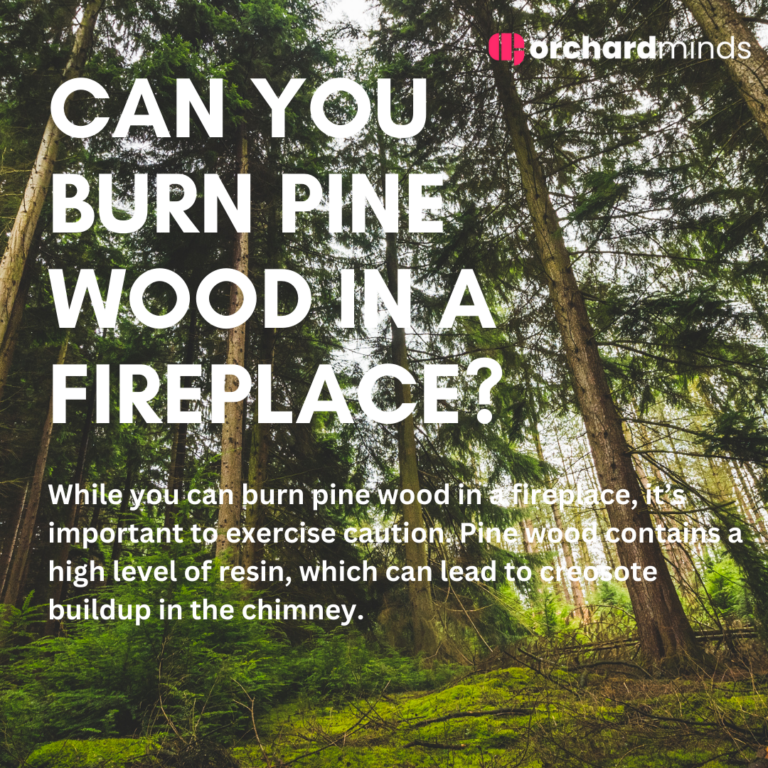Will a chimney fire burn itself out
Chimney fires can vary in intensity, and whether they will burn themselves out depends on several factors. In some other instances, a chimney fire will self-extinguish itself if the fuel to it is consumed or in case the supporting conditions change. However, this is a reliance on the chimney fire to burn out; it is a risky strategy. It will cause too much damage to the chimney, and eventually, the fire might spread onto the surrounding structure.
Any chimney fire should immediately be reported to the emergency services, and in the meantime, requisite safety precautions are to be taken so that it does not go out of hand.
Why Do Chimney Fires Start?
Creosote, which forms due to the burning of wood in a fireplace or wood stove, is the common cause of chimney fires. In very high-temperature conditions, or with bright-red glowing embers and sparks, creosote can catch fire. Poor maintenance and cleanliness of chimneys, coupled with a lack of routine inspection, also lead to the clogging of creosote, hence increasing the risk of fire.
Are Chimney Fires Common?
Chimney fires are not uncommon, and they pose a significant risk to the safety of homes. The occurrence of chimney fires will usually follow the frequency of using a fireplace or woodstove by the homeowner and maintenance practices. Regular inspection, cleaning, and knowledge of proper burning practices will reduce a chimney fire very greatly. Homeowners need to understand the risks posed in homes equipped with wood-burning appliances and take timely steps for the prevention and detection of chimney fires.
Chimney Fire Signs: How to Tell Your Chimney Is on Fire?
Detecting a chimney fire early is crucial for preventing extensive damage. Major signs would include the chimney making loud cracking and popping noises, the room becoming dense with smoke, and the flames burning at an intense and rapid pace being clearly visible through the walls of the chimney. In some cases, homeowners may notice sparks or flames shooting out of the chimney’s top. In any case, one of these signs is observed; the residence should be vacated immediately, emergency services should be contacted, and the fireplace or wood stove should not be used until damages are surveyed and taken care of by a professional chimney sweep. This, therefore, establishes the beforehand set fact that, with regular maintenance of a chimney and professional inspection, it doesn’t only prevent the starting of a chimney fire but also ensures safety within the house.
Fast-burning Chimney Fire Signs
Worst of all, the chimney fires can burn very rapidly and thus be very high intense, making the danger and characteristic of large crackling or popping sounds coming from the chimney.
Other visual cues are flames coming out and dense dark smoke billowing from the top of the chimney. Another major causative factor for the fast-burning chimney fire is the fast and aggressive combustion of the accumulated creosote, a byproduct from wood burning and very flammable. In such cases, the first action needs to be taken immediately. In the event of fire, it is necessary to call emergency services and move out from the premises. The fire should never be tried to be extinguished by self, as it might be dangerous to the chimney, building structure, and persons within the building.
Slow-burning Chimney Fire Signs
Worst of all, the chimney fires can burn very rapidly and thus be very high intense, making the danger and characteristic of large crackling or popping sounds coming from the chimney.
Other visual cues are flames coming out and dense dark smoke billowing from the top of the chimney. Another major causative factor for the fast-burning chimney fire is the fast and aggressive combustion of the accumulated creosote, a byproduct from wood burning and very flammable. In such cases, the first action needs to be taken immediately. In the event of fire, it is necessary to call emergency services and move out from the premises. The fire should never be tried to be extinguished by self, as it might be dangerous to the chimney, building structure, and persons within the building.
How Do I Know if I’ve Had a Chimney Fire?
Detecting a chimney fire can be challenging as they often occur without visible flames. Such may be indicative of a chimney fire: loud cracking or popping noises, dense smoke, or an intense, hot odor issuing from the chimney. Flames or even a glowing, reddish, orange-red tinge in the chimney may also be seen, especially in full-fledged fire.
If you ever suspect a chimney fire, make sure that you immediately evacuate your house, call the fire department, and do not use the fireplace or stove again until a professional chimney sweep has given the structure a clean bill of health.
HoneyComb Creosote
Honeycomb creosote is a deposit of creosote in a chimney, having built up to a construction similar to hard, porous honeycombs. This type of creosote is extremely flammable and poses a significant fire hazard. In most instances, honeycomb creosote would be found following an inside and deep inspection of the chimney by a professional, since in most cases, it wouldn’t be evident on the outside. Regular chimney maintenance, good burning practices, and annual inspections by a certified chimney sweep all work to minimize the existence of honeycomb creosote and reduce the number of chimney fires.
Wrapped Damper
A wrapped damper refers to a damper, a device that regulates airflow in a chimney, becoming warped or damaged. This can occur due to exposure to extreme heat, chimney fires, or general wear and tear. These can also become wrapped around it. This will make it hard to control the draft by the technician; therefore, less efficiency will place the chimney in an increased risk for fire. Some of the indications that the damper has become wrapped include: difficulty opening or closing the damper, loud noises, and damage seen on the damper. Recognizing damper problems on time, then resolving them in a timely way, would help in ensuring the safety and energy efficiency of the chimney and fireplace or stove.
Broken Flue Tiles
Broken flue tiles in a chimney can pose serious safety concerns. Flue tiles provide some sort of protection against the fire, working something like chimney lining. If any of them crack or break, it would mean that they can no longer hold the products of combustion to be safely vented out of the home, including hazardous gases such as carbon monoxide. Sometimes, there are crack flue tiles which would also allow water to enter in the chimney; further, it gets deteriorated. Therefore, broken flue tiles should be attended to on time. This can be done by checking with professional chimney inspectors or repair technicians. Repairs may involve replacing the damaged tiles to ensure the safe and efficient operation of the chimney.
Cracks in Exterior Masonry
It would, therefore, be apparent that the cracks forming on outer masonry, such as that on the brick walls or the facades, might be symptoms of different problems. Cracks may be caused by settling, freeze-thaw cycles, or structural movement. Some may be only surface, cosmetic cracks, while others could point to more serious structural issues, or have been caused by them. Therefore, it is important to find the cause of its formation and, if necessary, solve other problems that could lead to its further growth. The remedy might involve repointing or tuckpointing those mortar joints that have failed, stabilizing the foundation where necessary, or some waterproofing treatment.
Creosote Chunks on Rooftop
The presence of creosote chunks on the rooftop is a potential sign of chimney maintenance issues. Creosote is a byproduct of combustion, unburned and incomplete, produced from wood-burning appliances. Most often, failure to remove the creosote normally results in its accumulation inside the chimney, which can cause a fire in the chimney. Chunks of creosote breaking loose and exiting the chimney appear on the roof. This is an instant call to attend to chimney fires as they are more threatening to home safety. This would prevent the buildup of creosote and thus minimize chimney fires. Consultation with a professional chimney sweep is recommended to address and resolve creosote-related issues.
What Causes Chimney Fires?
Chimney fires are also a very common incidence due to the accumulation of creosote in the chimney flue, in which creosote is a very inflammable substance. The formation of this creosote takes place due to a by-product of wood burning. At times, this creosote might get deposited on the inner walls of the chimney. There is the possibility of catching fire for the creosote deposits; hence, leading to a chimney fire. However, the other contributing factors to the chimney fires include the burning of wood that is either unseasoned or wet, very limited air supply, and on occasion, sweeping or cleaning of the chimney.
This heat may further be so high from this kind of chimney fire to pose great danger to the structure of the chimney and igniting the house.
What Do I Do if I Notice a Chimney Fire in My Home?
The most important first step that is to be taken by whoever a chimney fire is suspected in his house is getting everybody out of the house at once. In case such an event follows, you immediately call in the fire department through an emergency service number to report the fire. Refrain from attempting to extinguish the fire yourself, as chimney fires can be unpredictable and dangerous. Close the damper so that the fire has less oxygen; if possible, sprinkle water on the roof around the chimney with a garden hose to help prevent further spread of the fire. Always prioritize safety and leave firefighting to trained professionals.
How Do I Prevent Chimney Fires?
Chimney fires can be prevented by maintaining and burning safely. Clean and inspect chimneys regularly; they should be done at least once in every year to eliminate creosote. The best type to burn would be seasoned, well-dried hardwoods with lower creosote production than green or softwoods. Do not burn cardboard, trash, or other materials, which would also lead to creosote formation. Moreover, the top of the chimney should have a spark arrester so that sparks should not pop out and light a fire in nearby things. Put an ultimate quality chimney cap to guard debris, animals, and rain from getting into the chimney. Never leave your fire, which has continuous burning ability, unattended.
What To Do After a Chimney Fire
When a chimney fire is realized, the first step that should be taken is the evacuation of all the house occupants and alerting the fire brigade immediately.
Don’t try to use the fireplace or wood stove again before it has been examined and the chimney cleared by a qualified chimney cleaner. Have repairs done by a skilled chimney repairman after inspection of the damage by a qualified chimney inspector. Until such a time when the chimney is inspected and declared fit for use, then it is best that the fireplace should not be used. This is because frequent chimney checkups and cleaning up can avoid chimney fires.
Why Are Chimney Fires Dangerous?
This is very dangerous since chimney fires can easily ignite other structures due to the high heat it produces. The fire starts when there is a creosote deposit, which is flammable, inside the chimney. Extremely high temperature produced during a chimney fire is likely to cause structural damage to the chimney, its lining, and adjoining combustible materials of the house. Besides, chimney fires are often unnoticed since they burn without showing flaming or silently and hence not creating great visual evidence. In some cases, this can cause house fires from the extremely high temperatures and damage from leaking carbon monoxide. Regular chimney cleaning and inspection become highly significant not only to reduce the risk of chimney fires but also to ensure that heating appliances can function safely.
6 Ways to Prevent Chimney Fires Before They Start
Regular Chimney Inspections: Regular inspections should be scheduled with a professional who is able to identify any problems developing and make necessary corrections. They might find issues like a build-up of creosote, cracked or broken parts, or other structural problems that may cause a chimney fire. Dealing with such problems promptly ensures that your chimney is safe and efficient.
Use Properly Seasoned Firewood: Burn only dry and seasoned hardwoods in your fireplace or wood stove. The relatively small amount of creosote is produced from low moisture content firewood when burned. Accumulation of the creosote highly flammable substance can line the chimney and raises the risk for a chimney fire.
Maintain Adequate Air Supply: Make sure of maintaining the supply of adequate air by proper ventilation with the damper open and a sufficient amount of air to feed the fire. Good airflow helps in minimizing the production of creosote and helps burn cleaner and safer. Avoid closing the damper too soon after extinguishing a fire, allowing lingering smoke and gases to exit the chimney.
Use a Spark Arrestor: Install a spark arrestor or chimney cap atop the chimney to keep sparks or embers from exiting the chimney and potentially igniting surrounding flammable material, such as leaves or roofing. It serves as protection from the danger of random sparks that can ignite a chimney fire.
Monitor Creosote Build-Up: From time to time, do check and note the build-up of creosote in your chimney, removing it whenever necessary. In time, creosote may build up in your chimney, especially with lower efficiency burning chimneys or those with poor ventilation. Modern technology and life’s convenience with advancement in modern times make available for hiring professional service in the name of a chimney sweep to assist you in cleaning chimneys regularly, which prevents a fireplace fire.
The Proper Practices in Burning: Should be observed, such as ensuring not to use an accelerant, cardboard, or treated wood, which forms part of what causes creosote. The observance of safe burning practice reduces the risk of a chimney fire. Do not overload the fireplace or wood stove with an excess of wood, as it will result in incomplete combustion and additional production of creosote.




Leave a Comment